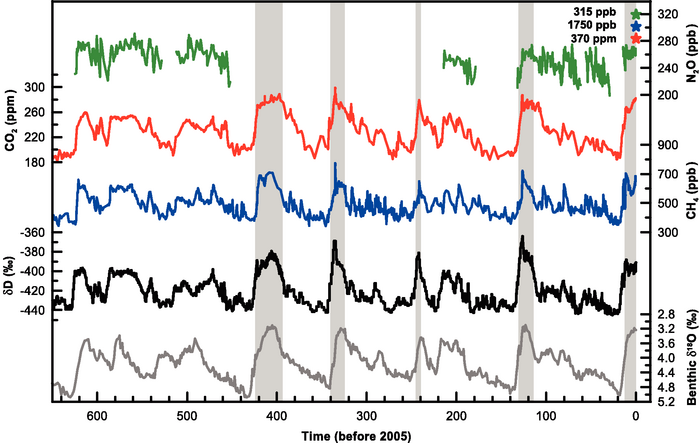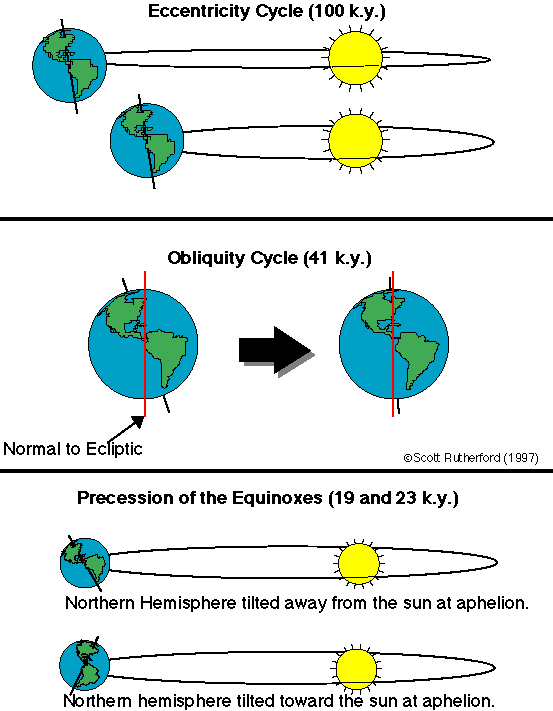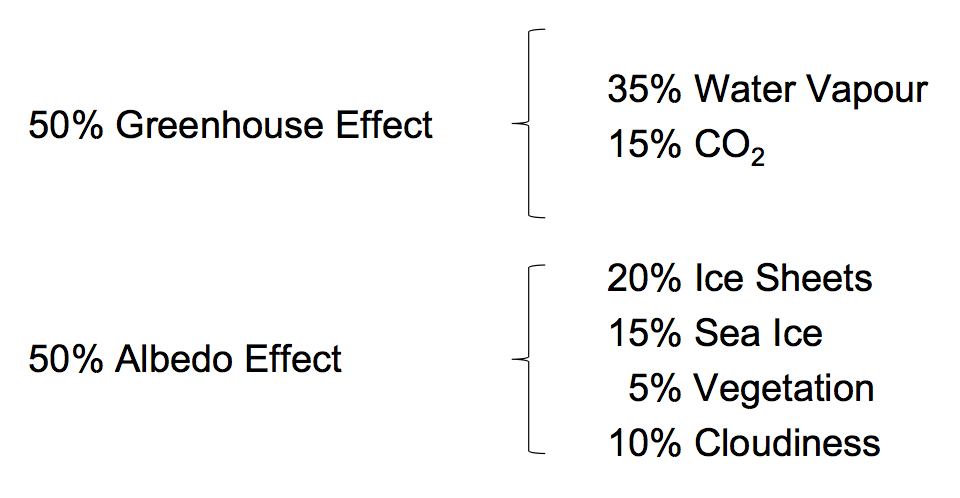Table of Contents
Glacial-Interglacial Changes
Author: Iria Bühlmann
Glacial-Interglacial cycles are describing the geological interval of warmer global average temperature years that separates consecutive glacial periods within an ice age. At the moment we are in the Holocene an interglacial period that has persisted since the end of the Pleistocene, about 11,700 years ago.
Thanks to Palaeoclimatic records a sequence of glacial-interglacial cycles covering the last 740 kyr in ice cores are documented
The best documented are the last 430 kyr, they are characterised by 100-kyr glacial-interglacial cycles of very large amplitude, as well as large climate changes corresponding to other orbital periods (Hays et al., 1976; Box 6.1), and at millennial time scales (McManus et al., 2002; NorthGRIP, 2004).
Where normally 10 to 30 kyr of each glacial-interglacial cycle was spent in the warm interglacial mode, there is now only a minor proportion (20% on average) of time.[Source:https://www.ipcc.ch/publications_and_data/ar4/wg1/en/ch6s6-4.html]

Figure: A proxy for local temperature, and the atmospheric concentrations of the greenhouse gases (CO$_2$ (red), CH$_4$ (blue), N$_2$O (green) also visible are Variations of deuterium δD (black). The concentrations were measured and derived from air trapped within ice cores from Antarctica.[Source:https://www.ipcc.ch/publications_and_data/ar4/wg1/en/ch6s6-4.html]
The Milankovitch theory - the engine to the interglacial cycles
The change in solar energy builds the engine to the cycle. The Orbit of the earth is an ellipse. This ellipse is not constant but has a changing eccentricity. Every 100'000 years the earth reaches the highest distance to the sun which leads to a decrease in energy and therefore temperature as well.
Climatic Change
Whereas it was likely to be the temperature that leaded the change in the cycle and the greenhouse gases followed as they are temperature dependent in the past. This has changed and nowadays the considerable increase of the greenhous gas (CO$_2$) has induces a warming of the atmosphere.
But there is more than only the greenhouse gases that have a major impact on this changes. As the solar energy is provided by radiation the albedo has a major effect. The albedo, depending on the surface, divides the absorbed from the reflected part of the net incoming radiation and therefore the energy. For example glaciers hold with about 0.4 a much higher albedo than water with about 0.1 and therefore reflect the radiation much more efficient. It can be shown that the effects of both, the greenhouse gases and the albedo are equaly important.
Change to the Ocean Circulation

In the two figures the MOC Atlantic Ocean Meridional Overturning Circulation is shown for the modern/ interglacial and the glacial case. It's visible, that in the modern time this circulation is very different and wider in its reach than in the glacial times. Changes in temperature may likely change this Circulations in the future. Depending on current simulations, it is very likely that the MOC will slow down during the course of the 21st century. The collapse of the MOC would have a mayor impact to the earth climate.

